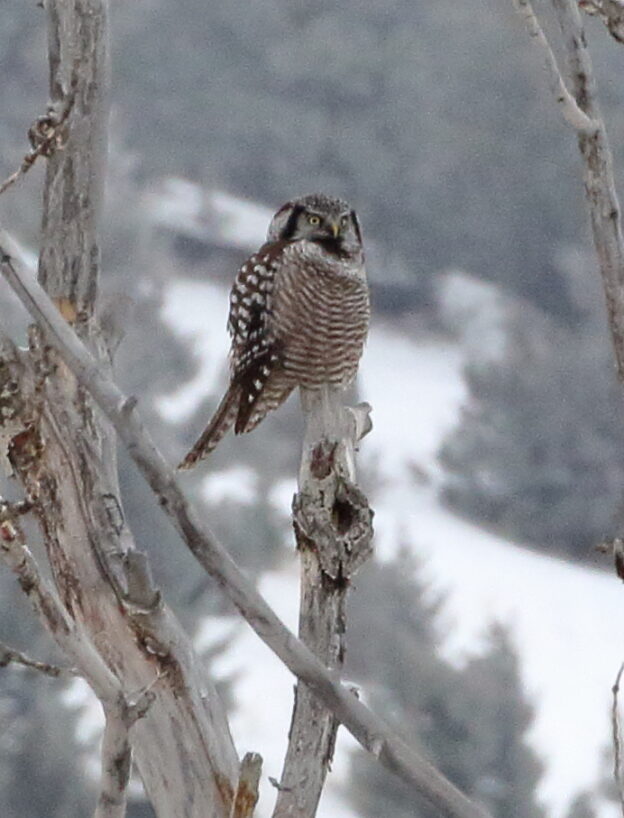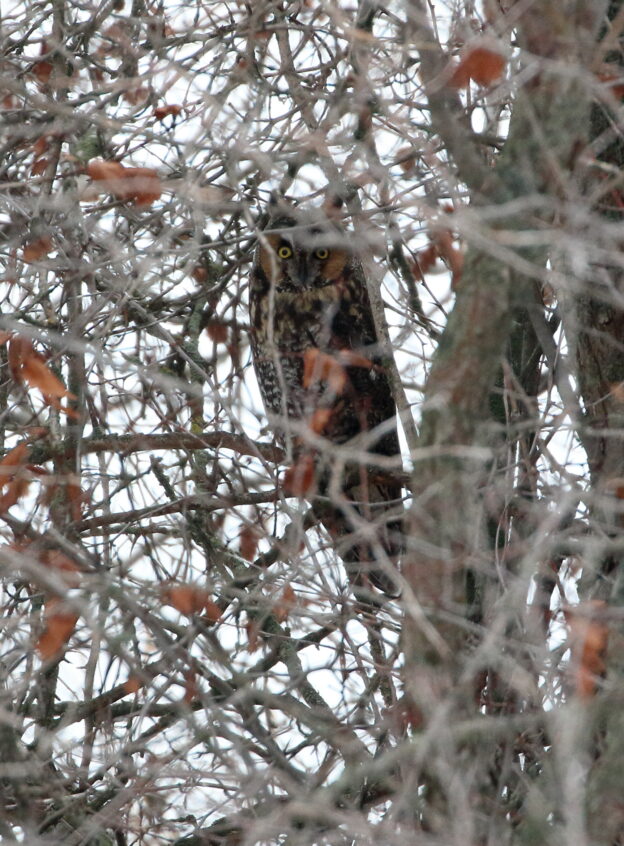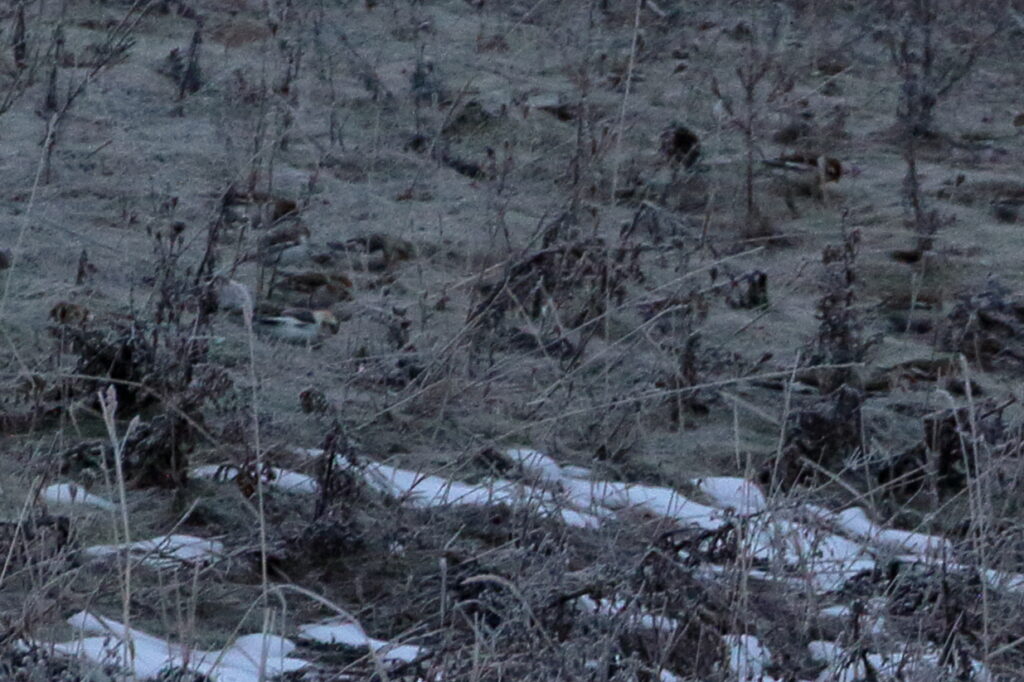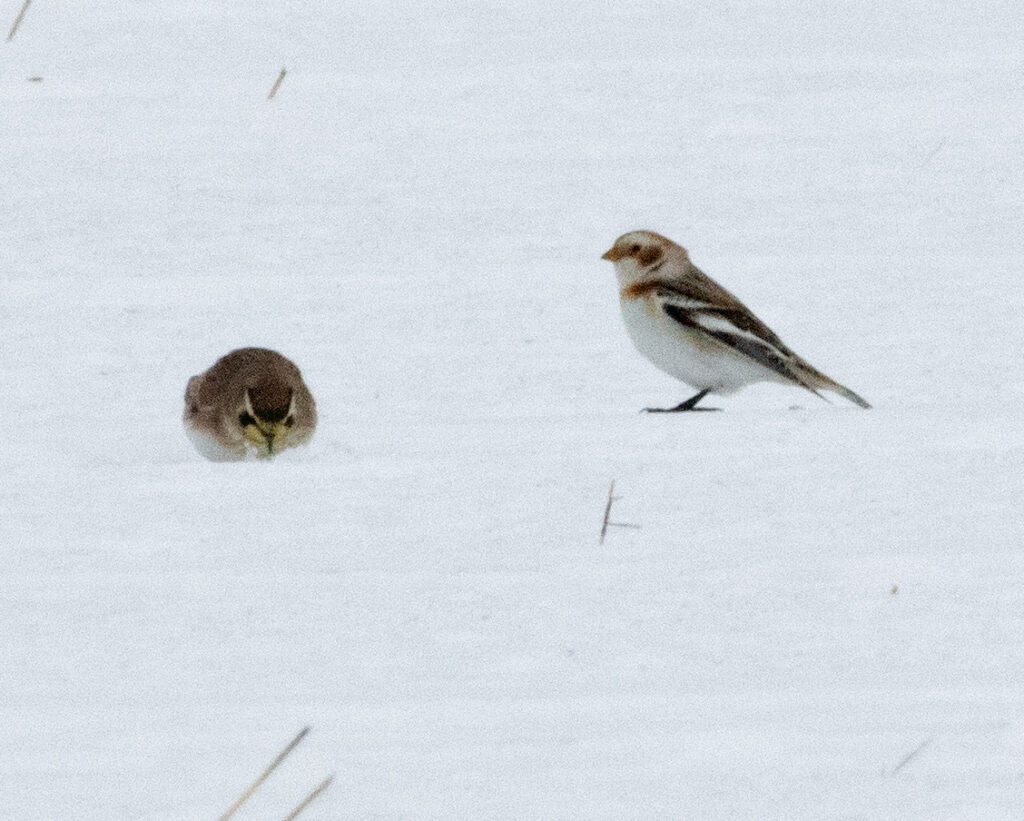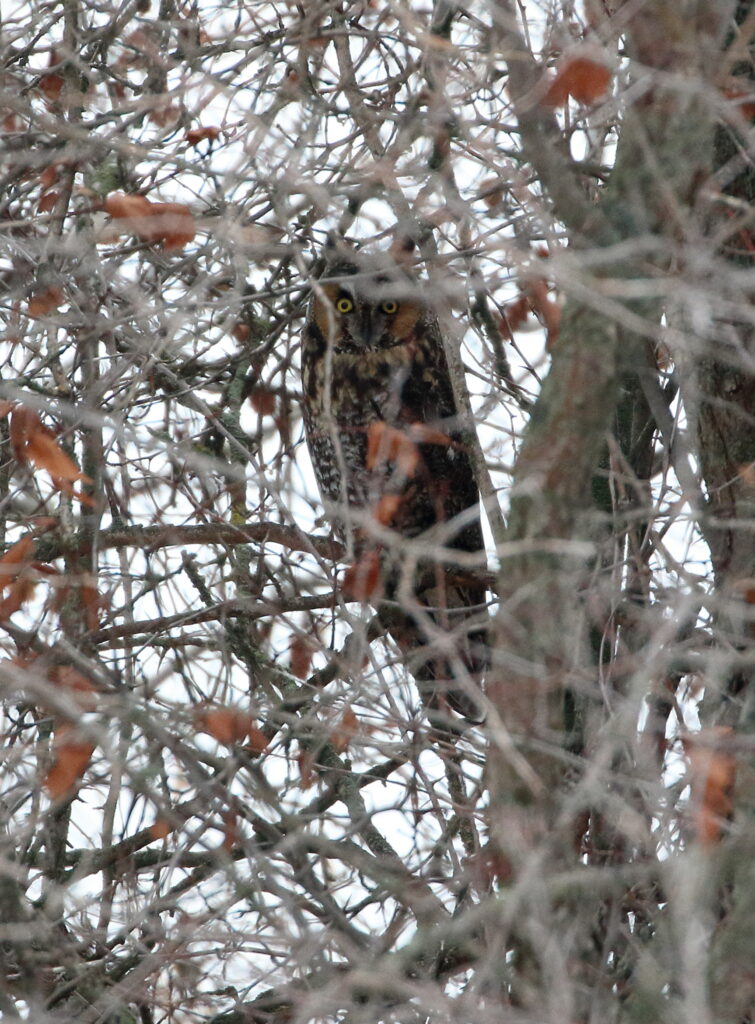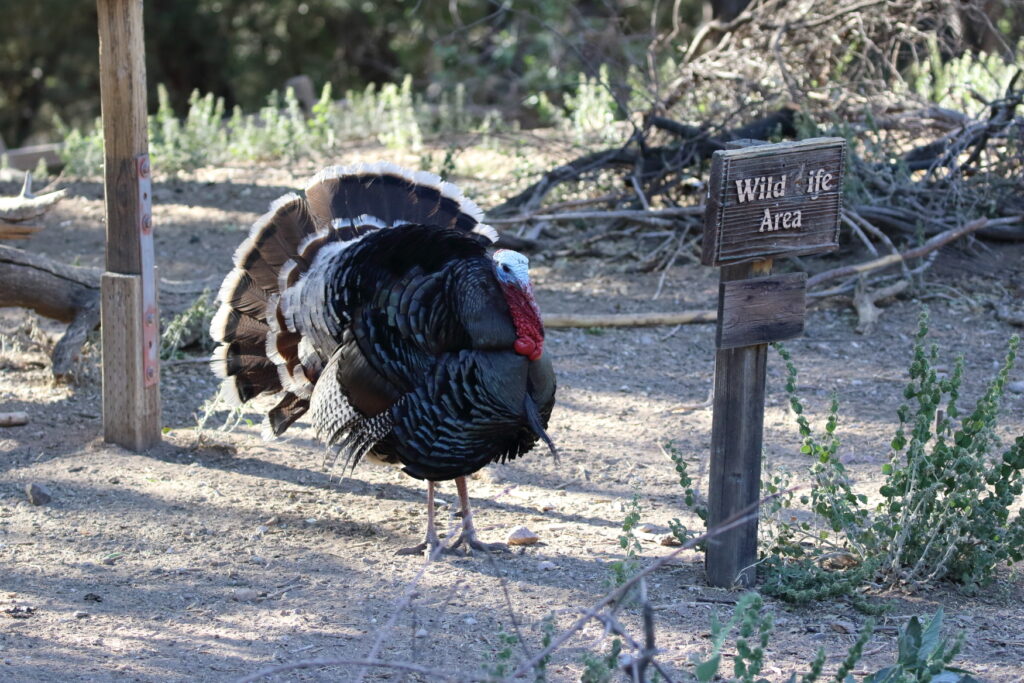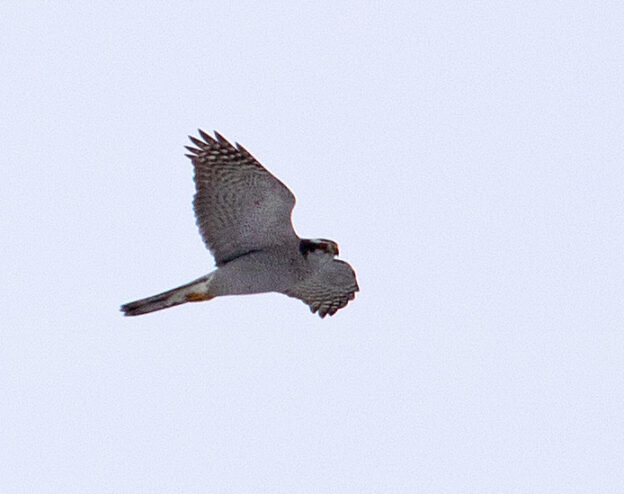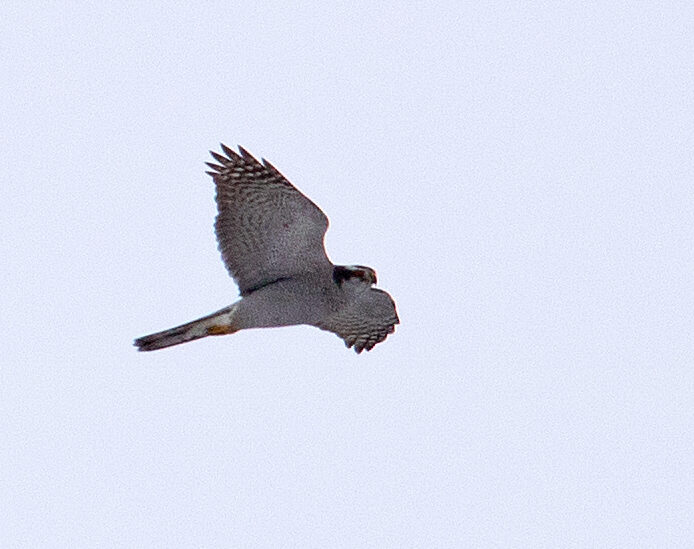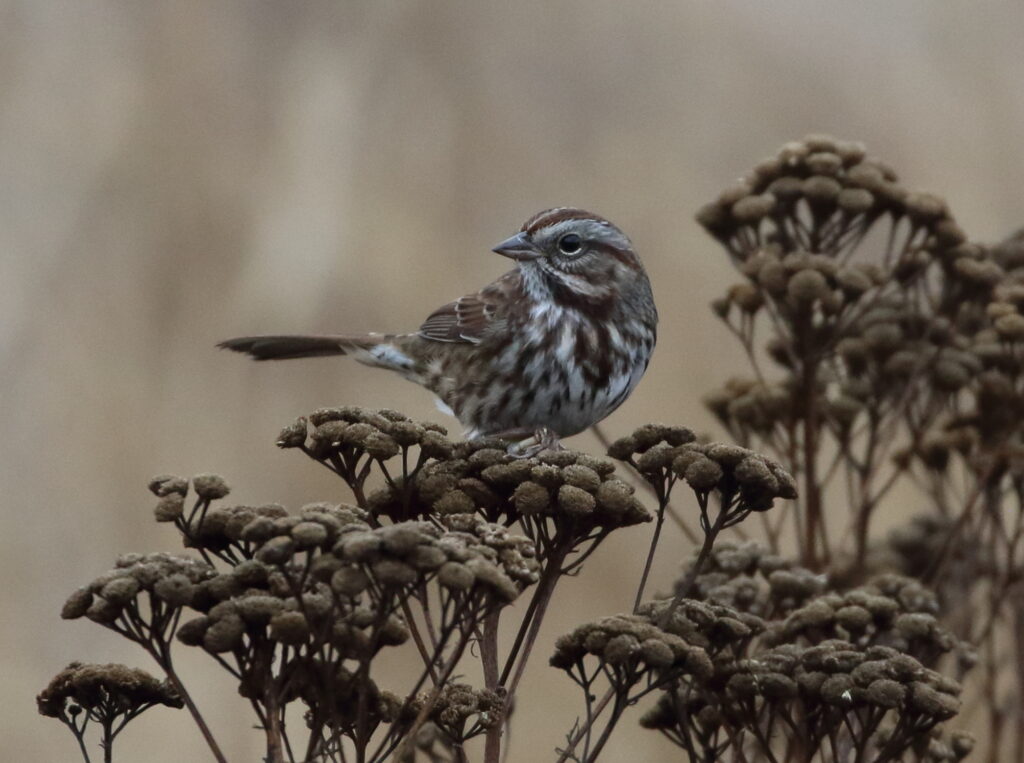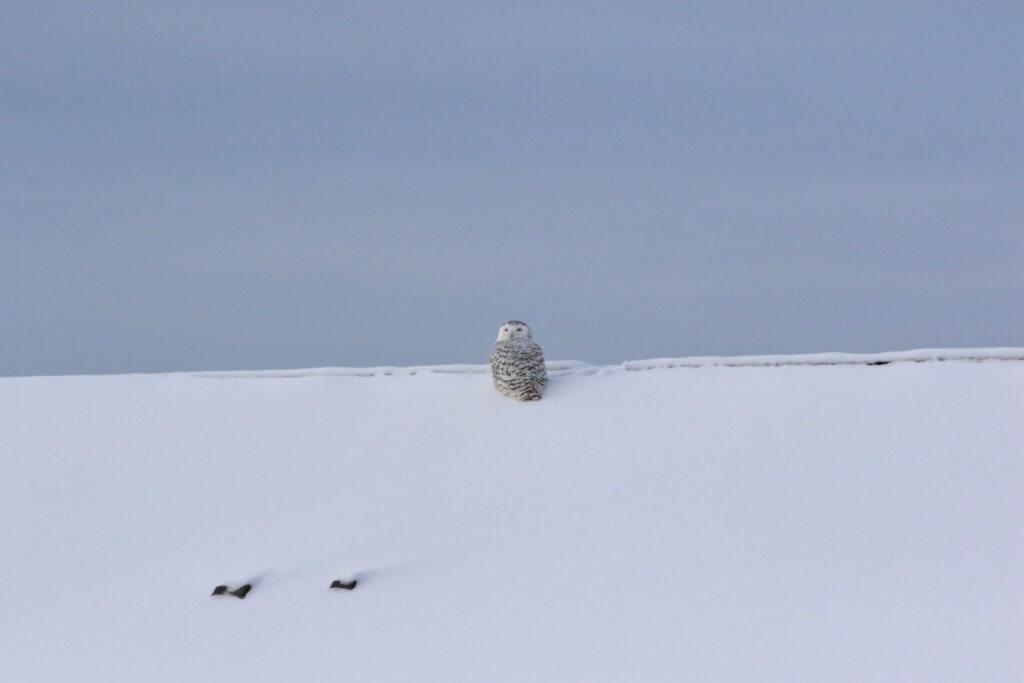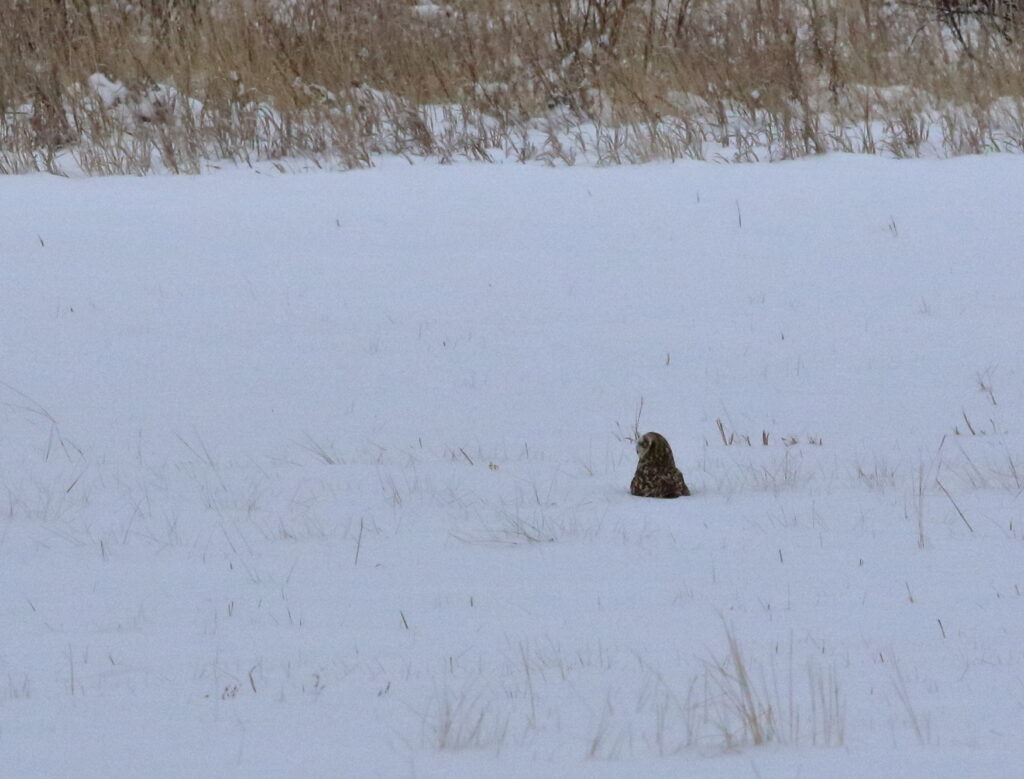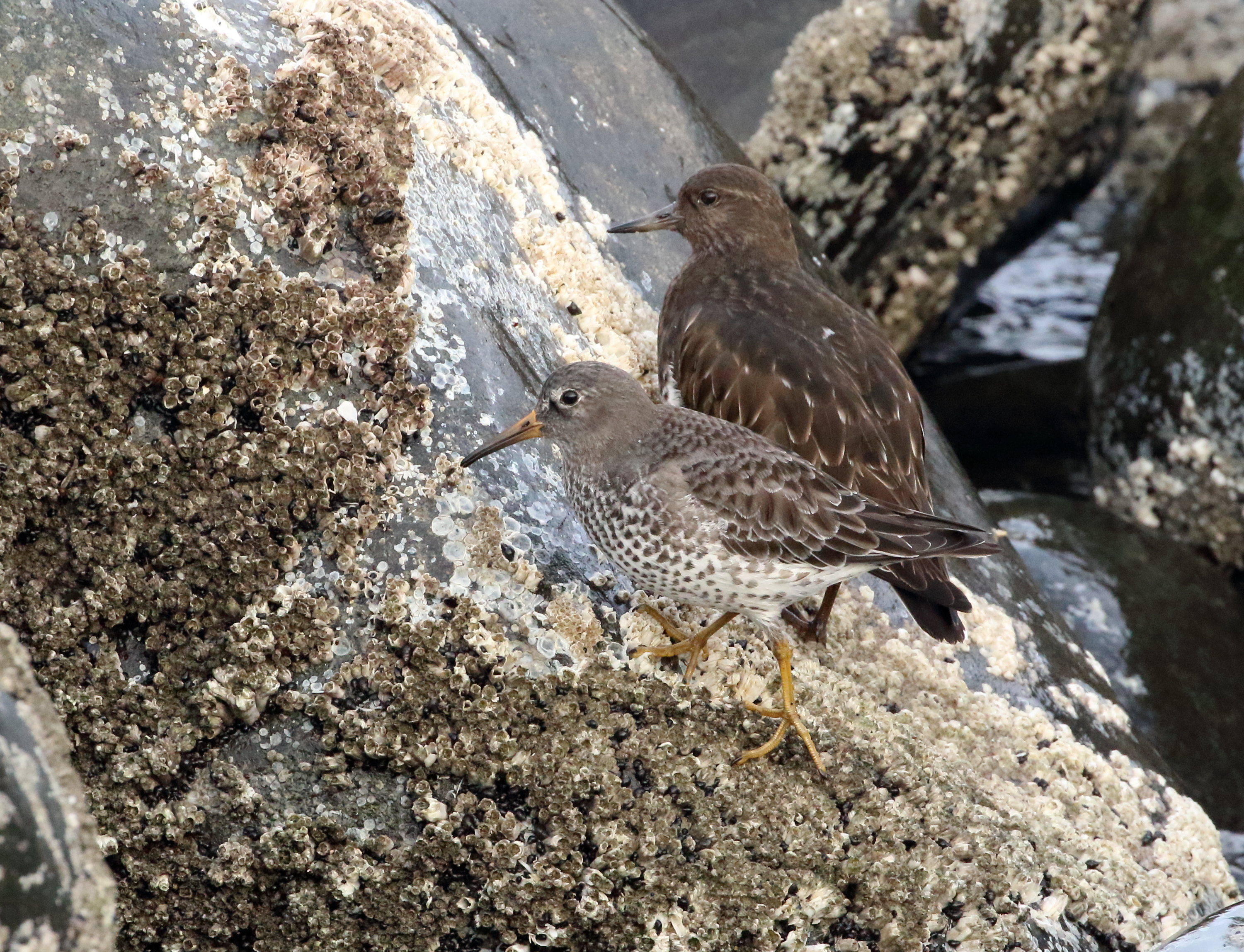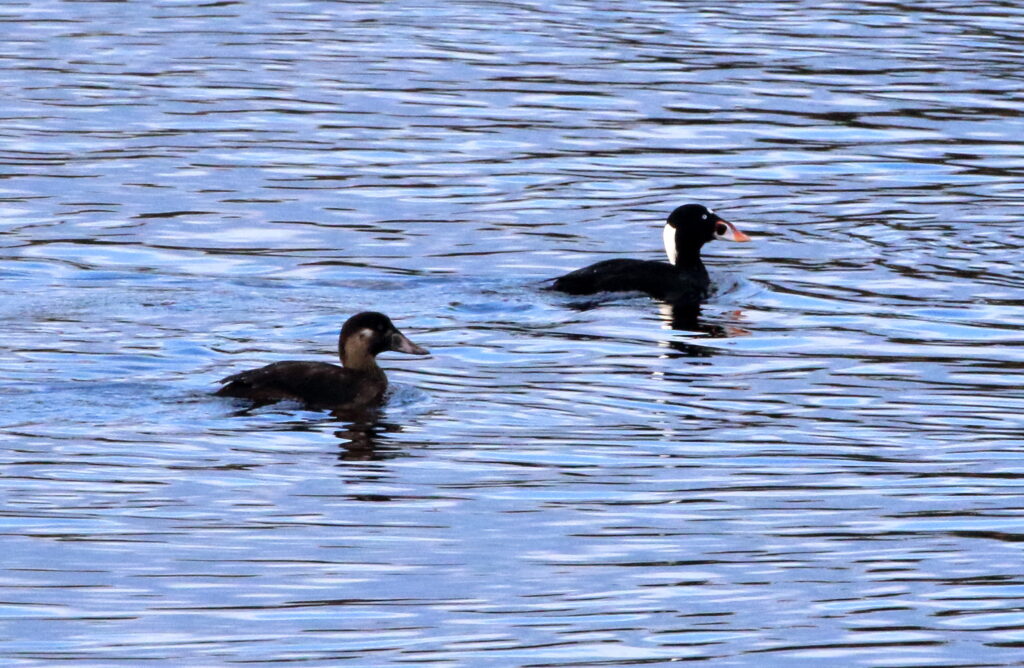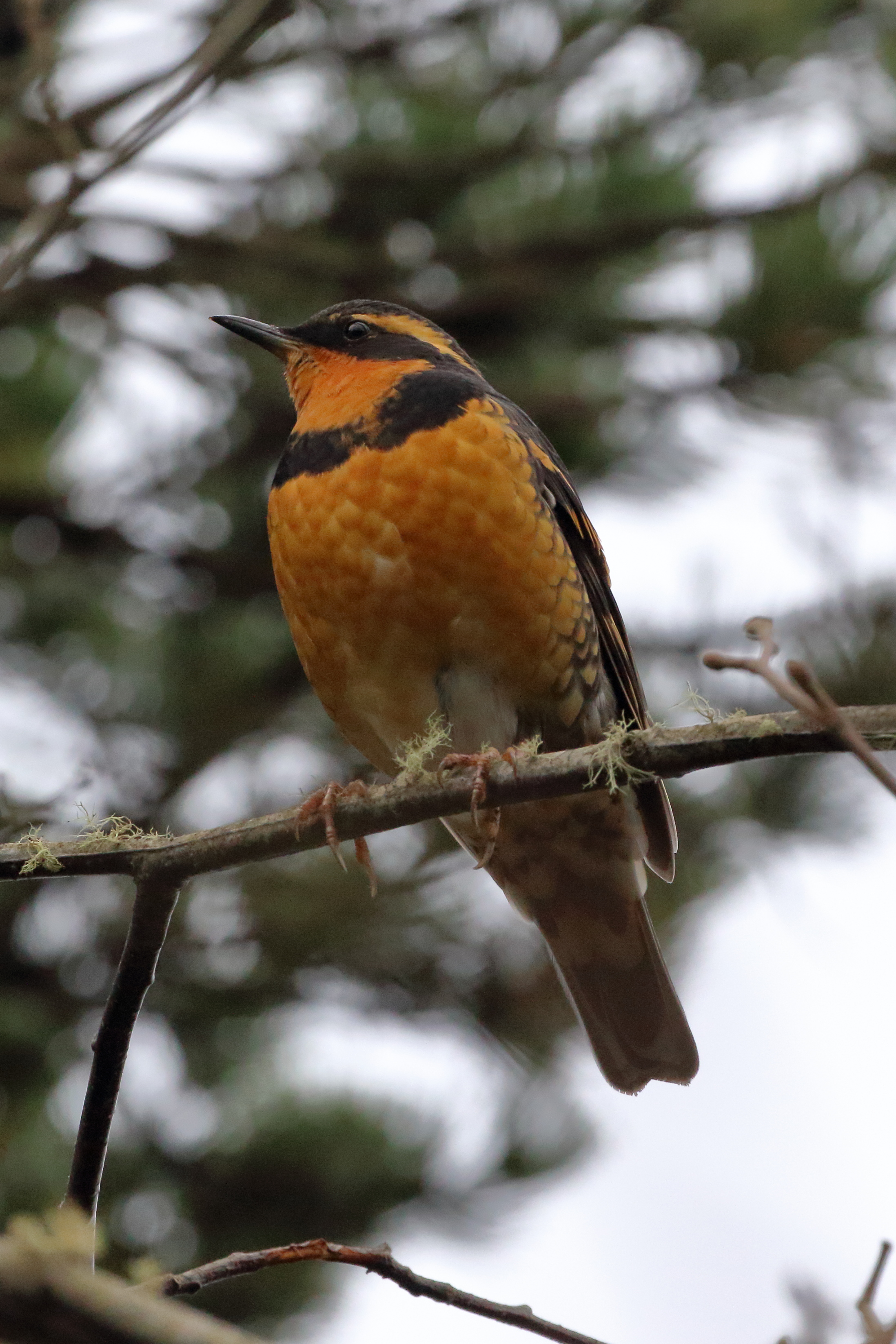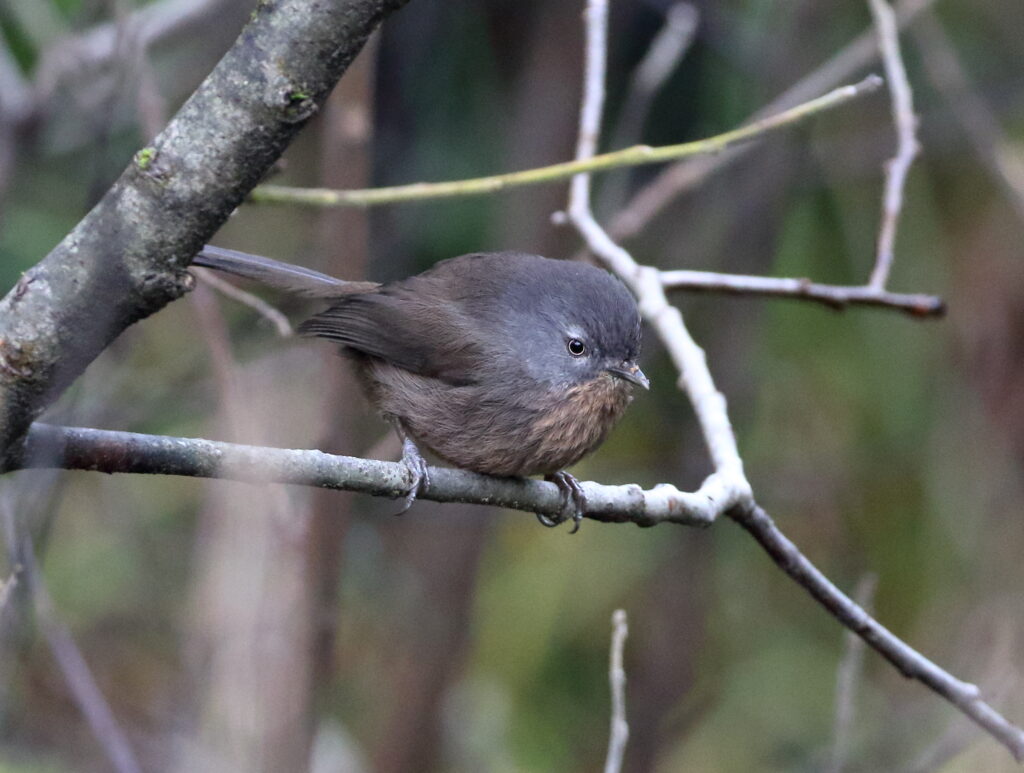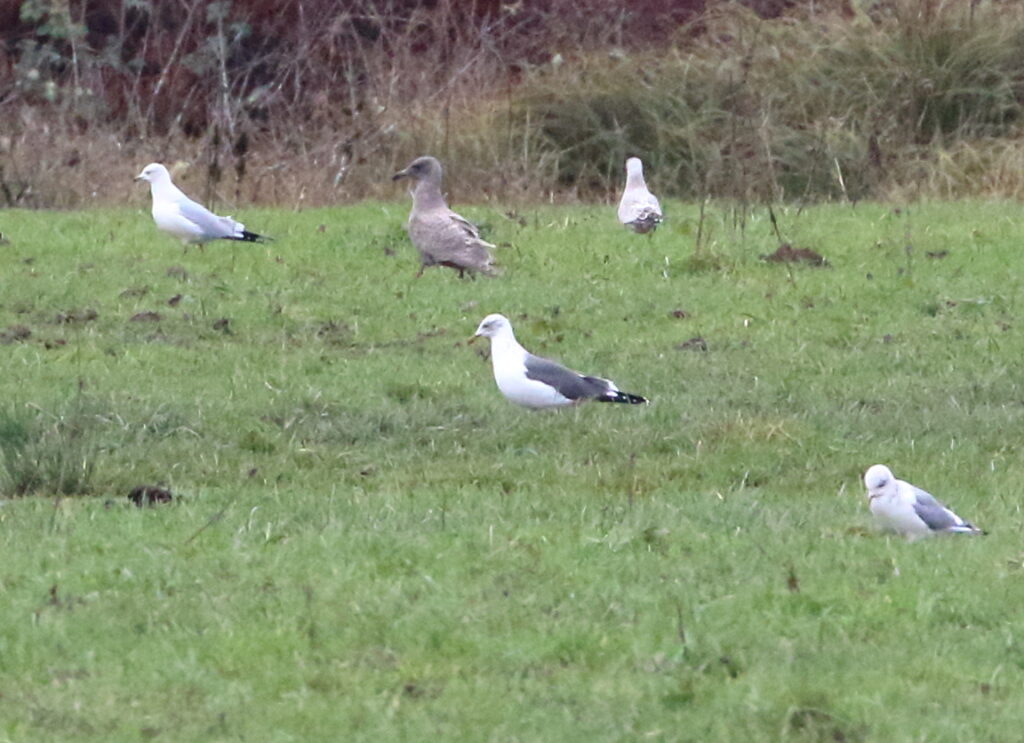Last week, Wise River resident Rory Macdonald reported a bird that got every Montana birder—and quite a few from other states—giddy with excitement: a Northern Hawk Owl. NHOWs are a decidedly boreal species, but venture south from Canada in a handful of places, mostly in winter. Cornell Lab dubs this owl one of the least studied birds in North America, but we do know that it preys on rodents as well as larger ground birds and hares. Many birders travel to Minnesota’s Sax-Zim Bog to see one, and every once in a while an irruption year brings more of the owls down into the U.S., but even so, NHOWs are considered one of the most difficult birds to see in the Lower 48. Here in Montana, breeding has been documented in Glacier National Park (mostly in burn areas), but breeding there has dried up in recent years and reports elsewhere are few and far between. It’s no surprise, then, that when the NHOW popped up last week, dozens of birders immediately leaped into their cars and headed to Wise River. Braden and I joined the fray.
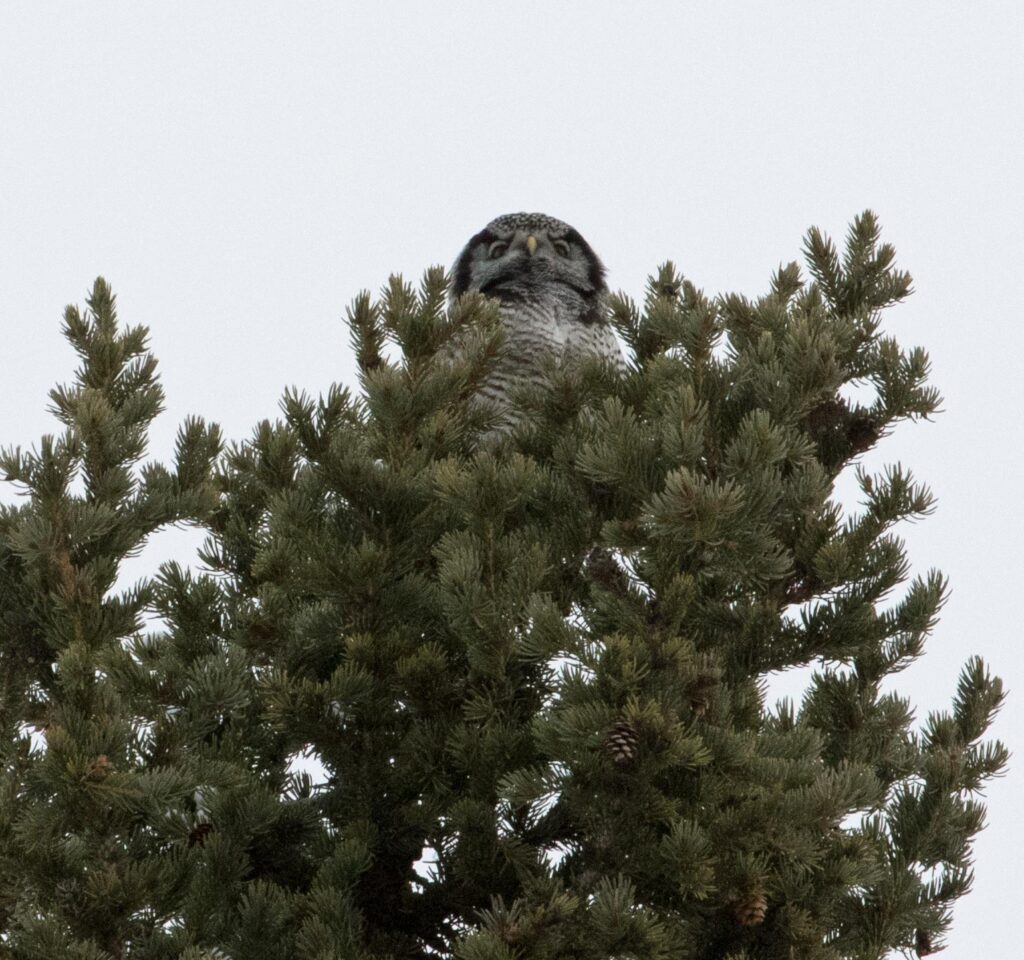
Wise River sits about two hours from Missoula, and after I got up early to take my daughter to driver’s ed class and walk our dog Lola, I returned home, grabbed Braden, and pointed our trusty minivan east on I-90 in the pre-dawn darkness. Fortunately, the roads were dry and we made good time, stopping at the Deer Lodge McDonald’s for our customary egg sandwich breakfasts before heading on. We arrived at Wise River just before 9:00 a.m. “Do you know exactly where the owl’s been spotted?” I asked Braden. “In two different places,” he replied. “The first is at the USFS ranger station up here on the left.”
I turned left as instructed. No owl. Braden then directed me to another location maybe a half mile to the west. We crept slowly down a snow-covered side road, carefully studying every fence post, roof, and telephone pole. I started to get the feeling that we wouldn’t find it, and Braden did, too. In our experience, it seemed that whenever we chased something really rare, we either saw it immediately—or missed it altogether.
The road turned left and we saw a pickup truck parked where the road made another left at the base of a mountain. “I hope that’s a birder,” Braden said. I did, too, but I also looked at the trees beyond. “There it is!” I exclaimed. “Oh—yes!” Braden said.
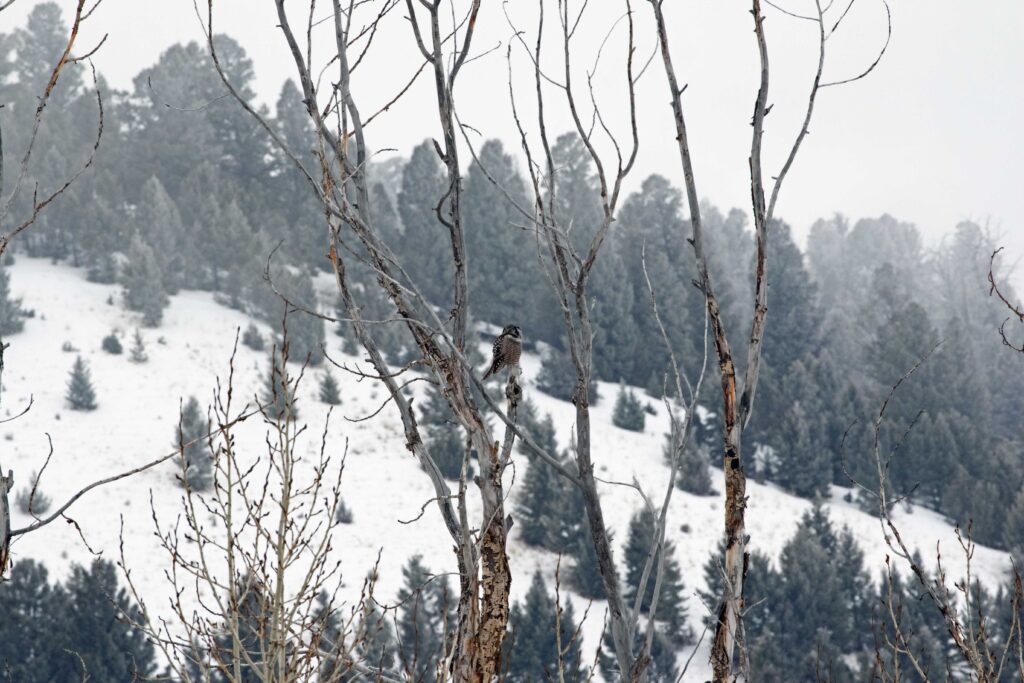
After parking, I quickly set up our spotting scope, and we carefully walked forward. The pickup ahead of us belonged to veteran Montana birder and photographer Dan Ellison, and we enjoyed a nice, fun conversation before focusing in on the owl, which fortunately didn’t appear to be going anywhere. “He doesn’t seem to be spooky at all,” Dan told us, and sure enough, the owl posed beautifully as I took photos and Braden trained the scope on it. As other birders joined us, however, the owl suddenly flew and torpedoed toward something in the sagebrush. Watching the bird fly was a real treat. Though definitely on the chunky side, the owl “handled” more like a falcon; fast and with surprising agility. After grabbing—or missing its prey—it disappeared around a rocky outcrop.

Fortunately, it soon reappeared in another tree, perhaps hungry for more “Oohs” and “Ahs” from admiring birders. Braden and I find ourselves chasing rarities less often these days, but we were definitely glad we chased this one. This was only the second Northern Hawk Owl we’d ever seen (for the story on the first, see our 2020 post “Incredible Birthday Birding”), and frankly, I never expected to see another. Not only did this one give us great, leisurely views, it was a wonderful ambassador for birds and bird conservation.
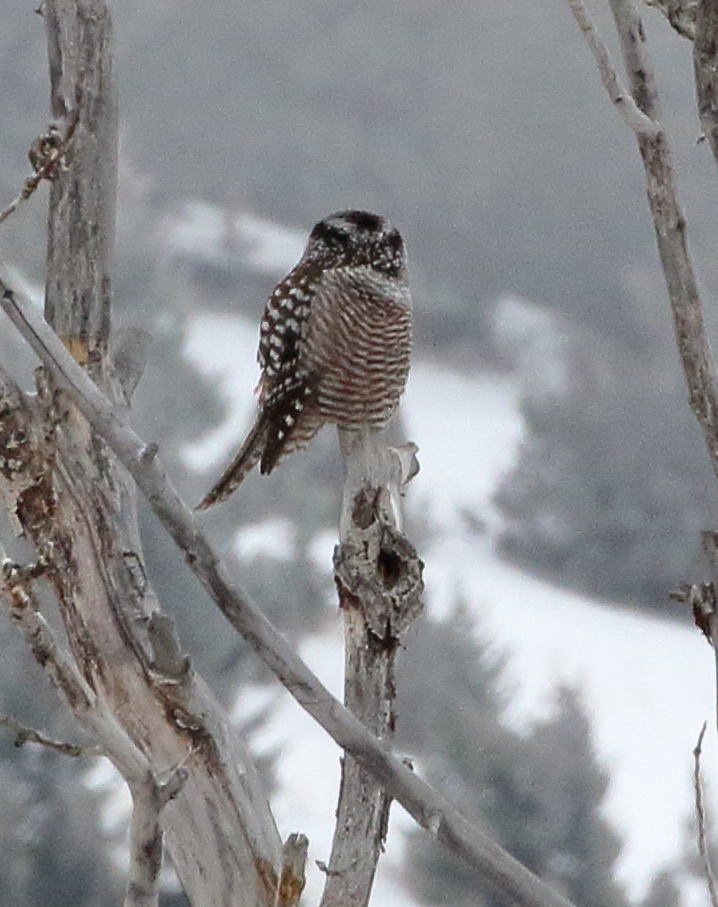

After an hour admiring the bird, Braden and I headed back out toward I-90, detouring up to Discovery Ski Area to find a few more winter birds—but maybe we’ll write about that later!

